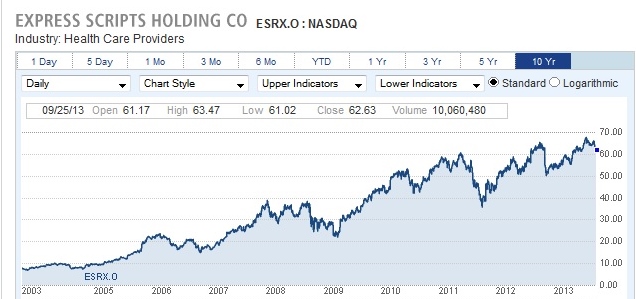Electronic cigarettes are here, settling over the country, quite literally, like a fine white fog. Smokers in turn, have been turning to them as a tool to help them quit, though the device manufacturers are are not allowed to market them that way in U.S. It seems intuitive that a device that mimics the action of smoking but without the combustion and smell of burned nicotine would be an ideal nicotine replacement therapy. However, there remain precious little research about weather the fine white smoke they deliver is as harmless as a morning fog, or as dangerous (and unwatchable) as an Oregonian fog delivering the vengeance of tormented souls.
E-cigs’ popularity can be attributed to the fact that they deliver an experience that very closely mimics the act of smoking, minus the social banishment that comes with exhaling obnoxious smelling carcinogens into other people’s personal space. How do they accomplish this seemingly impossible task? Why through the magic of modern technology, of course!

E-cigs look much like a regular cigarette, they are puffed on in the same way, give off a vapor that looks like smoke and even have an LED light that mimics the combustion of nicotine. The devices are made up of several components. In place of the body of the traditional cigarette, there sits a rechargeable battery housed within a cartridge which is capped on its end by an LED light. Where the filter would usually be on a traditional cigarette, there sits a heating element/atomizer as well as a replaceable nicotine cartridge. It is within this cartridge where a liquid mixture of nicotine, flavoring, and propylene glycol sits. Propylene glycol is a food additive that is also used to create the “fog” in fog machines. The cartridges can be obtained in varying strengths of nicotine all the way down to zero.
When one puffs on an e-cig, the sensor activates the LED and the heating element which then atomizes the fluid in the cartridge, delivering a dose of nicotine and vapor. The main perceived safety advantage of this mode of nicotine delivery has presumed to be the lack of combustion of nicotine, which by itself creates a host of toxic chemicals. The nicotine itself is still delivered, however, with its resultant deleterious effects.
There remain a number of things which are not well known about e-cigs. While propylene glycol appears to be safe in other applications (it’s an FDA approved food additive), it is uncertain as to how inhaling it regularly affects the lungs. It is also uncertain how efficacious e-cigs are when used the way that many people appear to be using them, as a smoking cessation tool.
To that end researchers in Italy conducted a study in which they enrolled 300 smokers who were not interested in quitting and were otherwise healthy. They were randomized to using e-cigs at either a steady dose of nicotine, a decreasing dose, or containing no nicotine at all for 12 weeks. They were allowed to use the e-cigs as they liked in addition to regular smoking and they were not encouraged to quit smoking regular cigarettes. After 1 year, quit rates (for all nicotine including e-cigs) among those using nicotine containing e-cigs were 11%. While this may not seem like a lot, it is as good as or better than most current nicotine replacement therapies. Keep in mind that these were people who were casually smoking e-cigs without the intention of quitting. Among those who did not quit, the number of cigarettes smoked daily decreased from 21 smoked per day to 14.
The investigators also looked at adverse events in order to gauge safety. They found that commonly reported adverse events actually decreased from baseline over the course of the study. They also found that side effects commonly seen during smoking cessation trials such as hunger, insomnia, irritability and depression, were infrequent, nor were there any significant changes in weight.
This data appears encouraging that e-cigs do have some use as a nicotine replacement therapy, and that many people could actually quit without simply exchanging one addiction for another. It also appeared that, at least over the duration of the study, the e-cigs appeared safe. People appeared to have less side effects, probably owing to the fact that they were smoking fewer traditional cigarettes.
However, this short 12 week study can not tell us about long term effects of e-cigs. Nor does it address other pertinent questions. Such as the moral hazard of removing social stigmas. Many who use e-cigs do so with the thought that they can use them in places where regular smoking is not allowed. One could wonder whether these products could take us back to the days of Don Draper, when it was permissible to smoke in public places, or even on the job, unwittingly leading to greater smoking rates. Some argue that the ability to flavor e-cigs will further draw younger people to smoke, likely made worse by an incorrect perception that, since they are not cigarettes, e-cigs are “safe”. Yet another problem is the consistency between products themselves. There exists a significant variation between contents of e-cigs between different makers, making it difficult to judge whether findings about one product can be generalized to others.
Indeed, we are only at the beginning of determining the risks and benefits of e-cigarettes. While they do appear to have some promise as cigarette smoking cessation tools, there remain several hazards to their increasing use. Until we have a better idea of what exactly is in this increasing fog, we best proceed with caution.
Citation: Caponnetto P, Campagna D, Cibella F, Morjaria JB, Caruso M, et al. (2013) EffiCiency and Safety of an eLectronic cigAreTte (ECLAT) as Tobacco Cigarettes A Prospective 12-Month Randomized Control Design Study. PLoS ONE 8(6): e66317. doi:10.1371/journal.pone.0066317


